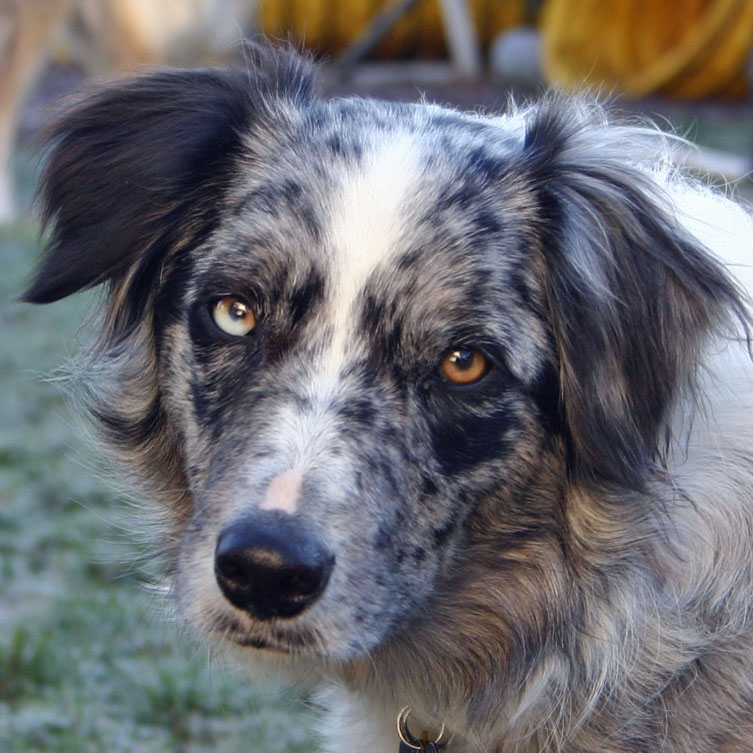About Crate Training
I just wrote all of this elsewhere in response to a comment from someone that he didn't like to lock his dogs up and that was probably why he didn't pursue crate training enough to be successful at it.
One challenge in getting people to crate train successfully is in getting over the idea that one is "locking up" one's dog. There are many reasons as to why it's a good idea to have a dog who is comfortable and relaxed in a crate. The thing to keep in mind is that almost all dogs are most relaxed in an enclosed place. My dogs prefer sleeping under a desk or a table--and if there's a long tablecloth over the table, all the better. The small dog in the house loves to crawl under the bookcase headboard of the bed rather than sleeping on the open floor. One dog liked sleeping in the closet. The psychological key for the human is to realize that one is simply training the dog to use a controlled crate rather than one of their own choosing, just as one trains them to sit, lie down, or stay under control rather than wandering around uncontrolled at all times with behavior of their own choosing. The crate should never be used as a harsh punishment. It should be a safe place for comfortable relaxing, and in that context can occasionally be used for a "time out" in training.
Let one converted dog owner tell her story. (That's me.) When I planned to go to my first dog agility event (not just training at the training facility), I discovered that it was not practical to have my dog on a leash on my wrist at all times. It was a long day, there were other dogs everywhere (and not all of them perfectly behaved), I had things that I needed to do without my dog and there were places where my dog was not allowed (e.g., walking the course ahead of time; cafeteria; restrooms...). Tying the dog up somewhere wasn't practical--other than there being nowhere to tie the dog, even a portable stick-in-the-ground post left the dog exposed to other dogs, other people, object flying in their direction (thrown toys, things blown by the wind, etc.). It just wasn't even an option, especially in crowded conditions with only a few feet of space for each person to set up in.
Plus, in trying to keep the dog with me, he never lay down, never relaxed, was always alert and on guard.
So with great reluctance, not wanting to "lock my dog up" in a crate, I purchased the largest metal exercise pen that I could find--I think about 4 feet by 4 feet. Here's what he did:
Stood up and leaned against the side closest to the door. All day. Sometimes he sat. Mostly he stood up, watching everything that was going on. Eventually I figured out that, if I draped a sheet over the top & sides of the pen, leaving only the front open, he would lie down--against one side of the pen--and sleep off and on.
Huh, so I was lugging around this heavy exercise pen and occupying 16 square feet for a dog who was occupying no more space than all of the other dogs comfortably resting in their crates. So after a year and a half I broke down and bought a crate and taught him what a fun place it was. So, when put into his crate (after his first run of the day, before which he NEVER relaxed), he'd immediately relax, lie down, get comfy, snooze, stretch his legs out.
I was converted.
Since then, I've found that crates are useful almost anywhere I go with my dogs; we've been invited to participate in a wide variety of events. Sometimes we're backstage, where there are 20 or 30 dogs in a space about 50 feet long. You have to have the dogs in crates in that situation. My assorted dogs have had to stay at the vet's for a variety of ailments over the years, and the vets always like them because they don't fight about going into the crates, they don't paw or bite endlessly at the doors, they wait for a release before barging out of the crate, and they relax once they're in there.
In the car, a strapped-in crate is probably the safest way to transport dogs. (Some of my dogs use harnesses instead, but I believe they'd be safer in an accident in a crate.)
At home, I acquired a dog who really does not like small children. After a few thousand good games of fetch, he goes right into his crate, where I can close him in and he can relax because he doesn't have to be on guard against the small children--and I can relax because he's not on guard against the small children.
I have an extremely energetic younger dog. When she can't manage enough self-control to be around guests, she can go into her crate. When she was much younger and I didn't know what she might pick up and chew up, I could put her into her crate while I worked at my desk and neither of us were stressed about life, the universe, and everything.
Most dogs sleep most of the day anyway--if you're home a lot and not active, just watch: I believe that 18 hours or more of a dog's day is spent snoozing. That's even for energetic, athletic dogs. They could just as easily be snoozing in a crate as under your feet at your desk. Complete list of labels






0 Comments:
Post a Comment
Links to this post:
Create a Link
<< Home